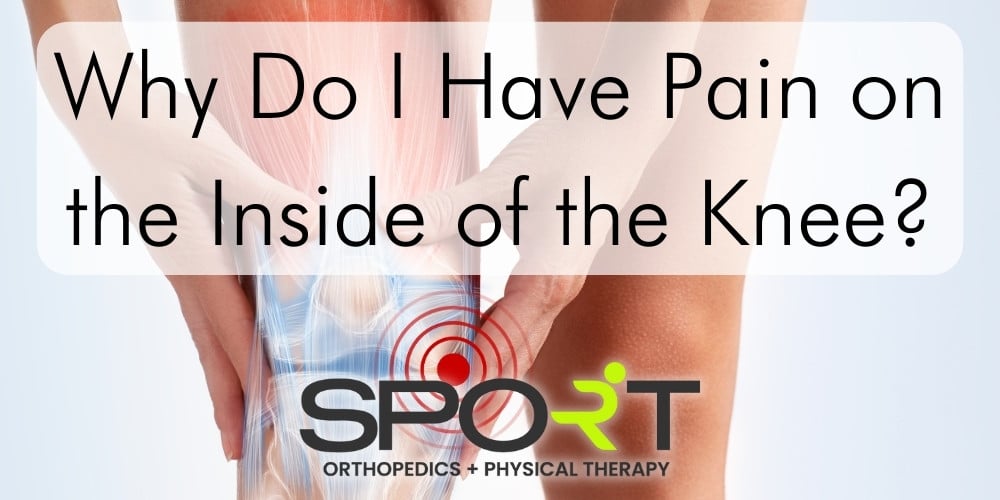Approximately one-third of all United States citizens report having knee pain at some point in their life. However, due to the complexity of the knee joint, it is susceptible to many different injuries and conditions. If you suffer from pain on the inside of the knee, your doctor will use this information to begin testing for certain conditions. Luckily, many of these inner knee pain conditions can be treated with physical therapy, orthopedic surgery, or a combination of both.
At SPORT Orthopedics + Physical Therapy, our Dallas orthopedic surgeons are committed to evaluating your knee injury and inside knee pain to develop a personalized treatment plan for you. We understand that severe inner knee pain can take you out of the game for far too long. That’s why we often use a combination of physical therapy and orthopedic treatments to help our patients with their knee injuries. To schedule an appointment with us, please call our office at 469-200-2832 today.
Anatomy of the Knee
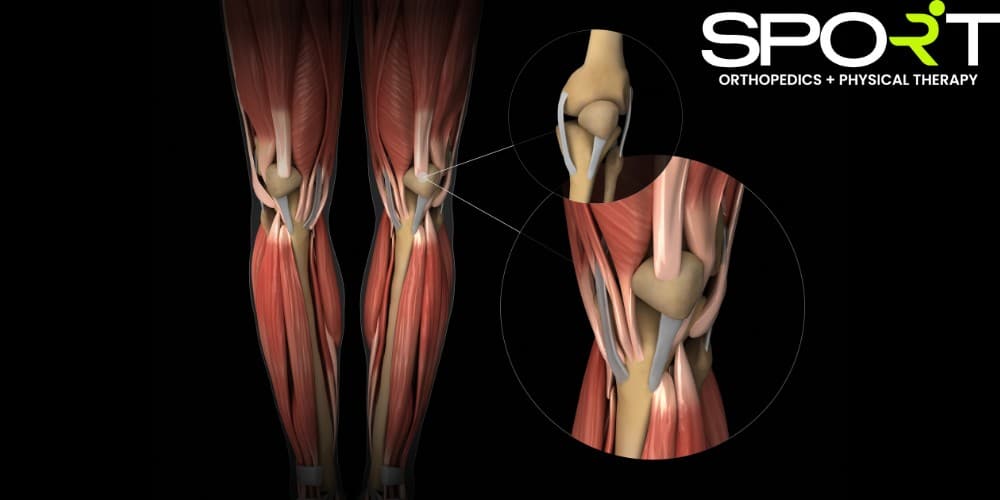
Understanding the anatomy of the knee joint is imperative when it comes to identifying sources of pain in patients. Simply put, the knee joint is where the thigh bone (femur) and the shin bones (tibia) meet. It is aptly named the tibiofemoral joint. The patellofemoral joint is also in the knee, and it is where the femur and the kneecap (patella) meet.
Synovial fluid surrounds this joint in order to keep it lubricated. Additionally, articular cartilage covers the bones to allow them to glide over each other smoothly. When these joints are damaged by wear and tear or by a knee injury, knee arthritis can develop.
The four major ligaments in the knee joint are divided into two categories: the cruciate ligaments and the collateral ligaments. The cruciate ligaments are the anterior cruciate ligament and posterior cruciate ligament, while the collateral ligaments are the medial collateral ligament and lateral collateral ligament. All of these ligaments work together to stabilize the joint, as well as control its movements.
Lastly, two C-shaped pieces of cartilage act as shock absorbers between the tibia and the femur. These are called the medial and lateral menisci. Looking at a Knee Pain Location Chart can give you a better understanding of what may be causing your knee pain in certain areas.
What Can Cause Inner Knee Pain?
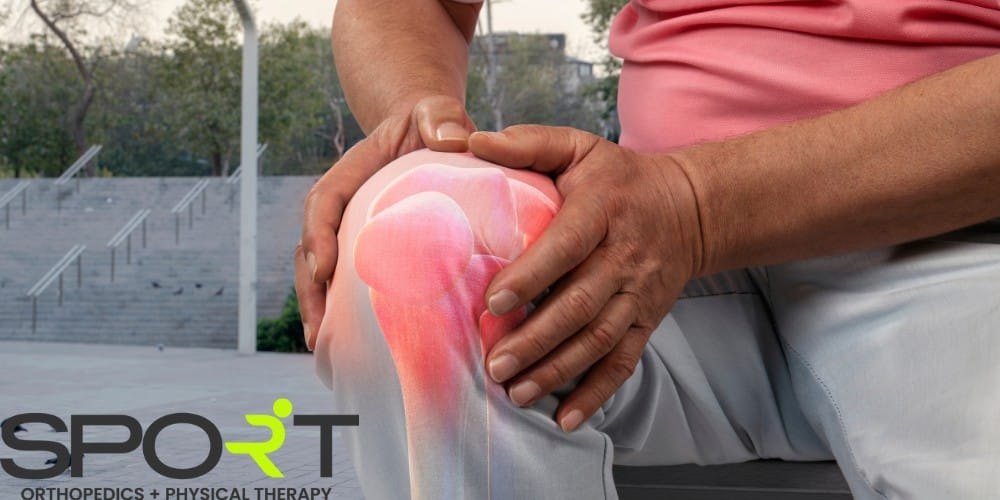
Although a number of conditions and knee injuries can lead to medial knee pain, certain conditions are more common than others. The medial knee area is the part of your knee that is closest to your other knee.
Most people experience inner knee pain when they have knee osteoarthritis, but again, other causes are entirely possible. In the following sections, we outline the common causes of medial knee pain and medial knee injuries, as well as treatment options.
Medial Collateral Ligament (MCL) Tear or Anterior Cruciate Ligament (ACL) Tear
Injuring the medial collateral ligament or the anterior cruciate ligament can also result in medial knee pain. If you experience swelling, knee instability, pain, knee locking, or a popping sound in your knee, there’s a chance that you’ve damaged a ligament. ACL and MCL injuries are common in contact sports, but they can also happen in other ways.
Meniscus Tears
A meniscus tear can also lead to sharp pain in the medial knee. Suffering a medial meniscus injury can greatly decrease the cushioning between your thigh and shin bones. This can lead to sharp inner knee pain, knee locking, imbalance, and knee stiffness. A medial meniscus tear is common in certain athletes.
Osteoarthritis
Knee osteoarthritis is a very common degenerative condition that affects the cartilage in the medial knee. After the cartilage wears down enough, the bones begin to rub together, which can result in sharp pain.
Many people with osteoarthritis (OA) notice that their symptoms worsen when they increase the pressure on their joints. You may notice increased medial knee pain while climbing the stairs or sitting in a chair.
Rheumatoid Arthritis
Rheumatoid arthritis (RA) is another potential source of inner knee pain. It is an autoimmune disease that leads to inflammation in the joints. Many people with RA find that their knee pain is much worse in the morning, and gets better throughout the day.
Bursitis
The bursae are small, fluid-filled sacs located throughout your body. They help to lubricate the joints and reduce friction between the bones. The bursae located in your knees are collectively known as the pes anserinus. When someone suffers from bursitis in this area, which is an inflammation of the bursa, it is called pes anserine bursitis.
Contusions
If you suffer a sharp blow to the knee, one of your knee bones could be bruised. A bruise on one of the bones is called a knee contusion. If your knee cap, shin bone, or thigh bone is bruised, you will likely feel symptoms such as swelling, difficulty bending the knee, stiffness, and skin bruising.
Plica Syndrome
There are small folds in the membrane of tissue that protects your medial knee joint. These folds are called plica. When the plica in the knee becomes irritated from an injury or from overuse, this can cause swelling, medial knee pain, and instability. This condition is called medial plica syndrome.
Jumper’s Knee
Also called patellar tendonitis, jumper’s knee occurs when the patellar tendon (which connects the patella to the tibia) becomes inflamed. The most common cause of this condition is overuse of the knee joint. Athletes who frequently run, jump, and quickly change directions are susceptible to this condition.
Patellar Subluxation
The kneecap, or patella, has a groove in which it normally sits. If something causes the patella to slide out of this groove, this is called patellar subluxation. Common causes of this condition include weakness or tightness of certain muscles around the knee, as well as suffering a direct blow to the knee. The symptoms of patellar subluxation include pain, swelling, knee popping, and the knee giving out.
Patellofemoral Pain Syndrome
This condition is a broad umbrella term used to describe medial knee pain around the front of the kneecap. Another term for this is runner’s knee. The symptoms generally include a dull, aching pain in the front of your knee that tends to get worse while using stairs, kneeling, squatting, or sitting with your knees bent for too long.
Iliotibial Band Syndrome
While this condition typically causes pain on the outside of the knee, it is a common overuse injury that can occur alongside another condition. It affects the iliotibial band, a thick band of connective tissue running along the outside of the thigh.
This condition occurs when the band becomes tight or inflamed due to repetitive friction over the outer knee joint. As the iliotibial band tightens, it rubs against the outer femoral condyle, causing irritation, severe knee pain, and inflammation.
Why Does the Inside of My Knee Hurt?
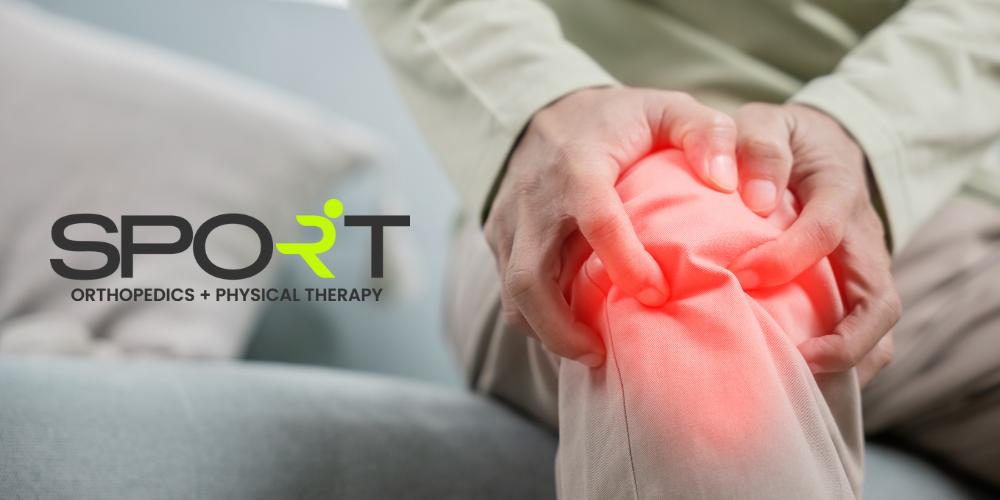
Pain on the inner side of the knee can result from various causes, including MCL sprains, meniscus tears, and osteoarthritis. Many patients have specific questions regarding their knee pain, especially when it comes to pain that occurs during certain activities. We explore common situations in which many of our patients experience knee pain in the following sections.
What Can Cause Pain on Inside of Knee, No Swelling?
Pain on the inner side of the knee without swelling can be caused by various factors, including medial collateral ligament (MCL) strain, pes anserinus tendinitis, or early-stage osteoarthritis. Even if your knee does not swell, we still recommend seeing an orthopedic professional about your knee pain.
The Inside of My Knee Hurts When I Straighten It – Why?
Pain on the inside of the knee when straightening it can be indicative of various issues, with potential causes including medial meniscus tears, ligament strains, or arthritis. Any of those conditions can result in severe pain while moving or straightening the knee. We recommend getting a thorough evaluation to determine the specific cause and to formulate a personalized treatment plan.
Inner Knee Pain When Bending
Inner knee pain during bending can be attributed to various causes, including issues with the medial collateral ligament (MCL), meniscus tears, or conditions like pes anserinus tendinitis. This affects the knee tendon.
Inner Knee Pain When Sleeping
Pain on the inside of your knee during sleep could be associated with various factors such as joint inflammation, ligament issues, or positioning during rest. Conditions like arthritis, particularly affecting the inner knee, may lead to discomfort during sleep due to increased pressure on the inflamed joint.
Inner Knee Pain When Running
Inner knee pain while running can be attributed to various factors, including issues with the medial collateral ligament (MCL), overpronation, or underlying biomechanical imbalances. It can also result from an acute knee injury.
Risk Factors for Inner (Medial) Knee Pain
There are certain risk factors that can increase one’s chances of developing inner knee pain. The knees are complex joints, which also means they are delicate. In order to keep your knees strong and heavily, avoid the following risk factors.
Excess weight: Our knees help to carry us through life. When someone carries too much weight on their knees, this puts more stress on those joints. This increased stress turns everyday activities, such as walking and using stairs, into a challenge for the knees.
Lack of strength or flexibility in the muscles: The muscles, tendons, and ligaments that surround our knees are crucial. Having inadequate strength or flexibility can increase one’s risk of an acute injury.
Playing sports: Certain sports, due to their physical requirements, put greater strain on the knees. Examples include basketball, skiing, running, and soccer. The risk of a sports injury is increased even more if you have other risk factors involved.
Previous injury: Even if you take care of your knees, suffering from an initial injury automatically makes you more susceptible to future reinjury. However, you can still take steps to avoid ligament injuries, strengthen your leg muscles, and avoid an overuse injury.
When to See a Doctor for Inner Knee Pain
Many milder cases of medial knee pain resolve on their own, with conservative home treatments and rest. However, if you have any of the following symptoms, we recommend speaking with one of our orthopedic specialists as soon as possible.
- Significant swelling
- Noticeable redness
- Warmth and tenderness
- Sharp or significant pain
- Fever
You should also consult with your doctor if you have had mild knee pain for more than a few days. Even if your pain is mild, continuing about your day with an untreated injury will do more harm than good in the long run.
How to Treat Inner Knee Pain
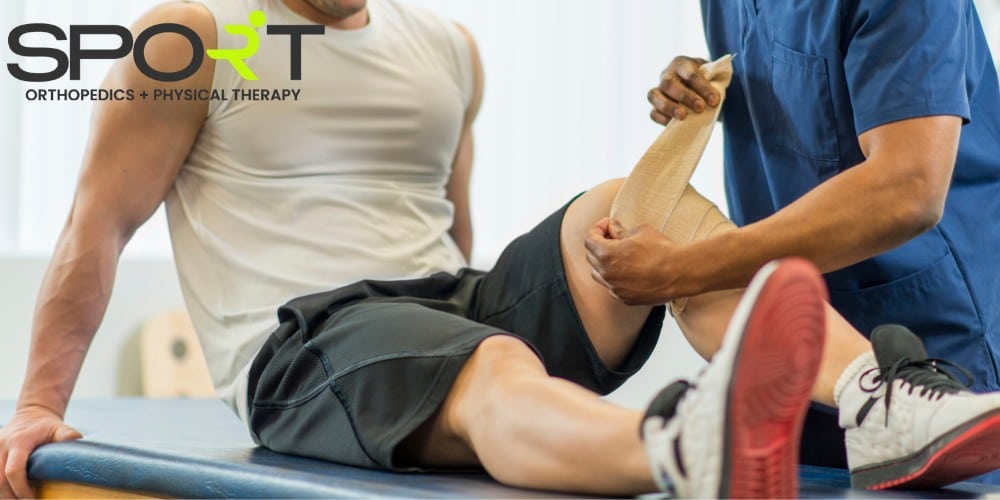
There are a number of different knee pain treatments that can help with your inner knee pain, both surgical and non-surgical. Our professionals prefer to begin with conservative treatments, such as physical therapy and the RICE method, before moving on to other options. If pain medications and physical therapy aren’t enough to help your medial knee pain, we may try knee gel injections. These are popular alternatives to invasive knee surgery.
However, if none of the above options improve your pain, our orthopedic team is here to help you determine if surgery is right for you. Many problems can be resolved through knee arthroscopy, which involves only a small incision and is minimally invasive.
Contact SPORT Orthopedics + Physical Therapy for Knee Joint Treatment
At SPORT Orthopedics + Physical Therapy, our orthopedic team has extensive experience working with patients to form unique, personalized treatment plans that work for them. A torn meniscus, an MCL injury, or sudden trauma to the knee can lead to a number of painful conditions.
This pain might keep you out of the game for longer than you’d like. We can help you pinpoint the source of your pain, treat it at the source, and get you back to doing the things you love in no time. To schedule an appointment with one of our specialists, please call our office at 469-200-2832 today.

